Almost everyone who travels to the ‘Kingdom of a Million Elephants’ has the UNESCO-listed old town of Luang Prabang on their itinerary. For long, Vang Vieng was a popular destination, offering the chance to float down a river on a rubber tube while consuming cocktail buckets and more, but the town is now much calmer.
However, unlike the countries that encircle it, Laos does not have a particular spectacular attraction that draws in the tourist crowds. While Cambodia has the temples of Angkor, Thailand has its beaches, Vietnam has Halong Bay, and even Myanmar has the Shwedagon Pagoda and the temples of Bagan, the attractions found in Laos are much more understated.
What Laos does offer is a little slice of mystery. In the much less visited northeast of Laos, a region of uncommon natural beauty that is still living with the consequences of a tragic history, there remains an unsolved mystery that dates back two millennia.
A troubled past
The gentle hills of Xieng Khuang province surrounding the regional capital of Phonsavan are often covered in a gentle mist, giving the region an air of mysterious tranquillity that belies the area’s more brutal past. This plain has been extensively fought over down the years and during the Second Indochina War. This was when Laos was the theatre of conflict for what became known as the ‘Secret War’, a struggle where external powers fought by proxy on nominally neutral Lao territory. During a war that officially did not exist, parts of Laos were subjected to indiscriminate bombing, with America unloading more explosives on this country than it dropped during the whole of the Second World War. Most of the munitions fell on the northeast, and Laos is now the most bombed country per capita in the whole of history. In total, three tonnes of napalm were dropped for every man, woman and child in the country.
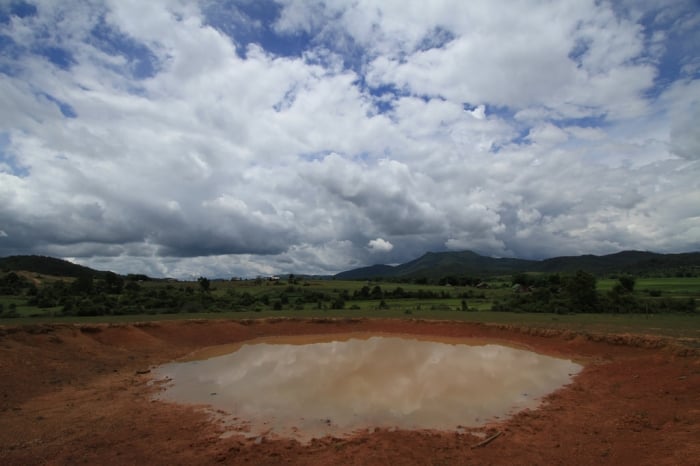
A crater near Phonsavan in Xieng Khouang province | Image credit: MAG (Mines Advisory Group)
Forty years on, reminders of the war are never far away. From the air, a landscape pockmarked by craters become visible.
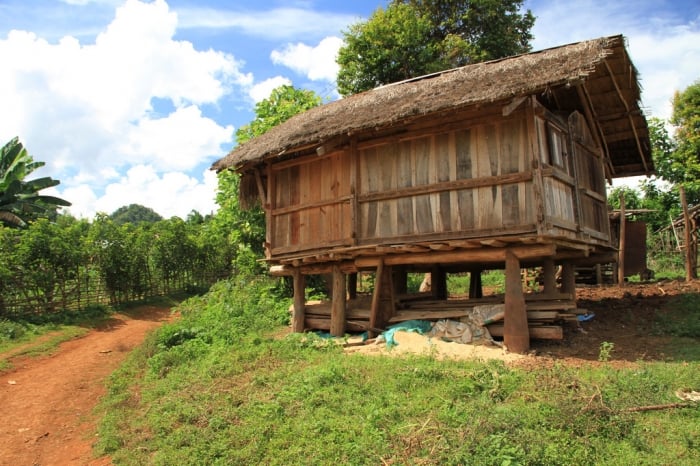
House that rests on the outer casings of cluster bombs | Image credit: MAG (Mines Advisory Group)
As you drive through villages, you’ll discover a unique style of improvised architecture where locals have scavenged metal from shells and incorporated them into their houses as posts, gates, fences or parts of walls. Many of the bombs that fell were antipersonnel cluster bombs and of the 262 tonnes that were dropped, it is estimated that 80 million tonnes did not explode. Most of this deadly rain is still present in the ground and the countryside around Phonsavan is extensively contaminated by unexploded ordinance, UXO, which poses a constant danger to those trying to make a living from the land. With little other income available, some even try to collect the metal to sell on as scrap. Devastating accidents are a fact of life here.
Mysterious jars
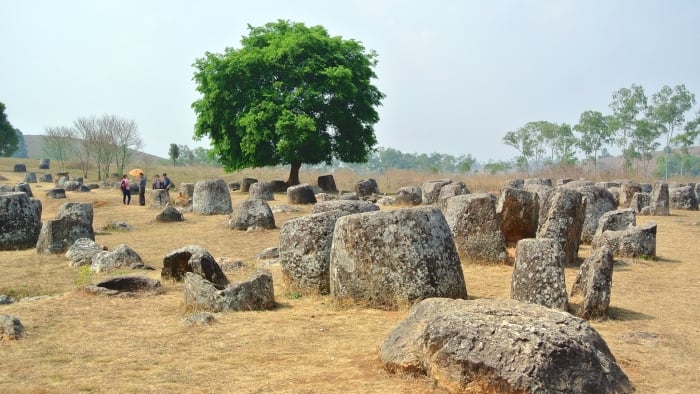
Image credit: James Antrobus
Yet in a land that bears witness to humanity’s great capacity for senseless destruction, there can be found an enduring testament to our urge to create. Here at the scene of so much carnage lies one of Southeast Asia’s most important and enigmatic prehistoric archaeological sites. Scattered across the plains and hills that were subjected to ceaseless bombardments, groups of giant jars hewn from solid rock litter the landscape, the largest of which can measure up to two metres in height and weigh several tonnes.
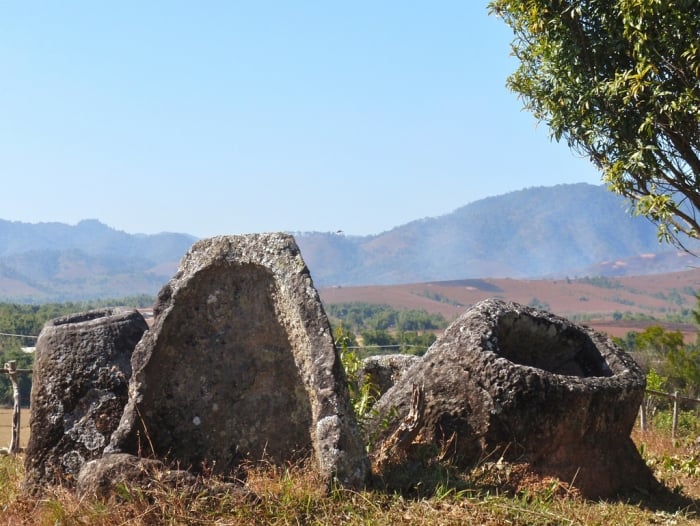
Image credit: John Pavelka
The jars are thought to be over two thousand years old and were created by an iron age culture that existed here from around 500 BCE to roughly 500 CE. The creators of the jars inhabited the region at the same time the ancient Greeks were finishing the construction of the Parthenon in Athens and they were living there when Huang Shi Qin was busy founding a dynasty and unifying China. These great jars have dotted the landscape for over two millennia and now their secrets have been lost in time. Even today, we still know very little of the people who left them or what purpose they served.
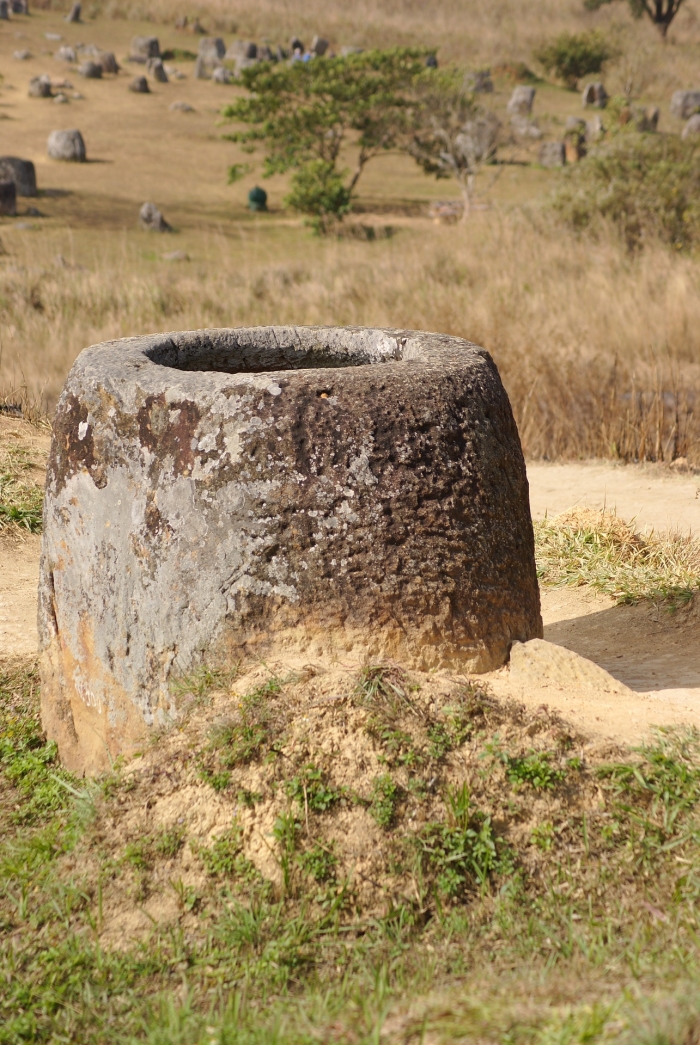
There are many theories. One local legend states that a great battle was once fought on these plains between races of giants. According to the tale, the jars were created to brew rice wine for celebrations by the victors. Another idea is that they were used to collect monsoon rainwater for travellers who used the ancient overland trade routes that passed through the area. The most widely accepted explanation for the jars is that they were used as recipients in cremation rituals and some archaeological evidence has been found to support these claims. In truth, we still don’t know with any certainty who created the jars or why, and possibly we never will. The jars may hold on to their secrets forever.
Visiting the jars
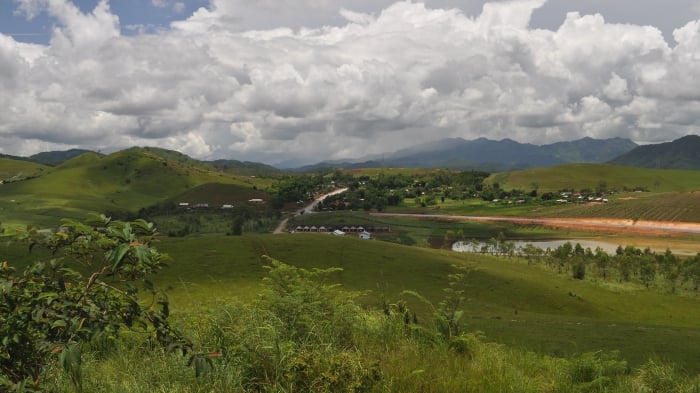
Plain of Jars Site No. 1 | Image credit: David McKelvey
A trickle of intrepid travellers now makes its way to Phonsavan to visit these sites. The three most visited clusters are numbers one, two and three, all lying within easy reach of the town although some other less known ones are also accessible. Tourism has become more organised in recent years and an entrance fee is charged to gain access to each of the sites. It is possible to visit independently by renting motorbikes or a car although it is much better to pay for a guide as they can help visitors understand the context of the jars. For those visiting independently, it is essential to stick to marked paths as not all of the land has been cleared and striking off into the unmarked country is extremely hazardous.
It used to be possible to find independent guides offering their services about town but now visiting is only permitted with a guide from one of the several registered agencies in Phonsavan. If possible, you should try to organise a tour that takes in more of the surrounding area as this will take you out to see the picturesque countryside while at the same time offering you a glimpse of the region’s grim history. Remnants of the fighting are everywhere, including rusting tanks, bomb craters and piles of decommissioned shells, and in the villages, you can see where bomb parts have been reused as building materials. You may also be able to stop at a local lao-lao factory, artisanal distilleries producing the local kind of rice whisky. If you are brave enough, you can even try some.
While in town, a visit to the UXO Survivor Information Centre makes a highly recommended if utterly depressing detour. The centre provides displays on the tonnes of munitions dropped on the area, the attempts to educate the local population and the effects of the accidents that still frequently occur in this part of the country. Details are given of recent incidents and the centre tells the stories of the victims trying to piece together lives that continue to be destroyed by bombs that have lain in the ground for over forty years, the legacy of somebody else’s futile conflict.
Timeless witnesses
The incomprehensible savagery and indeterminate killing of the war were played out against the heartbreakingly beautiful backdrop of the north-eastern Lao countryside with the timeless jars as inscrutable and impassive witnesses. The stark juxtaposition of these jarring elements ensures that any trip to Phonsavan and the Plain of Jars transcends mere tourism. Thousands of lives were lost and people still continue you be maimed and yet the jars remain, unchanged, unmoved. The war was but a brief instant in the two-thousand-year existence of these stone enigmas and we are left to reflect on what was really achieved by all the suffering as the war fades into history and the jars continue to endure.
Practicalities
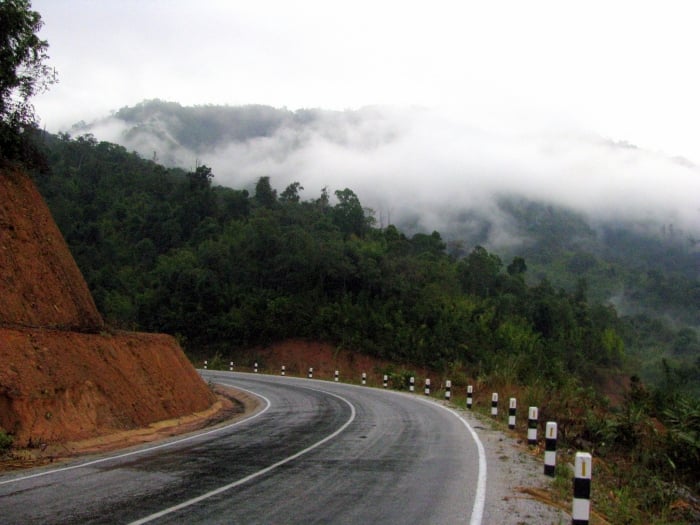
Image credit: Paul
Arriving in Phonsavan used to be much more difficult than it is now and a number of guesthouses and tour agencies exist in the town making it easier than ever before to stay there and organise tours of the sites of interest.
It is possible to fly to Phonsavan airport from Vientiane and daily buses also run from Luang Prabang and Vang Vieng; there is now also a direct bus from Vientiane. The route from Vang Vieng passes high through the mountains and if you stop at one of the small roadside restaurants, you’ll enjoy lunch while looking out over a stunning backdrop of mountain scenery.
Coming from Vientiane takes around nine to twelve hours, from Luang Prabang eight to nine hours and from Vang Vieng around six to eight – although bear in mind that in Laos, these times can only be approximations. There are also less frequent buses from neighbouring Vietnam which arrive from Vinh or Hanoi via the Nam Ka border crossing, where visas on arrival are currently available.
Bonus: Interesting Fact
Many travellers pronounce ‘Laos’ with no ‘s’, calling it ‘Lao’. Why is this and what is correct? In the Lao language, like in Thai, there is no actual word for Laos and it is referred to as ‘Lao Country’ with the word ‘Lao’ here being an adjective (the same as in Thai, Thailand is called ‘Thai Country’). This is sometimes shortened to just ‘Lao’ and often, Lao people will call their country ‘Lao’, even in English. Many foreigners copy this but it is the equivalent of saying ‘Spanish’ instead of ‘Spain’ or ‘Dutch’ instead of ‘Holland’ – as in ‘I’m from Dutch’.
In European languages, it was the French who gave the name ‘Laos’ to the modern country. At the time, Laos was three separate kingdoms. They were brought under French control and were given the name ‘Laos’, in the plural, after the dominant ethnic group of the region, the Lao. In French, a plural is written with an ‘s’ but it is not pronounced. In English, however, an ‘s’ is pronounced for a plural and the correct pronunciation for the name of the country in English is ‘Laos’ with an ‘s’. Lao’ with no ‘s’ is the adjective. In modern French, the plural sense of the original name has been lost and it is now also pronounced with the ‘s’.





